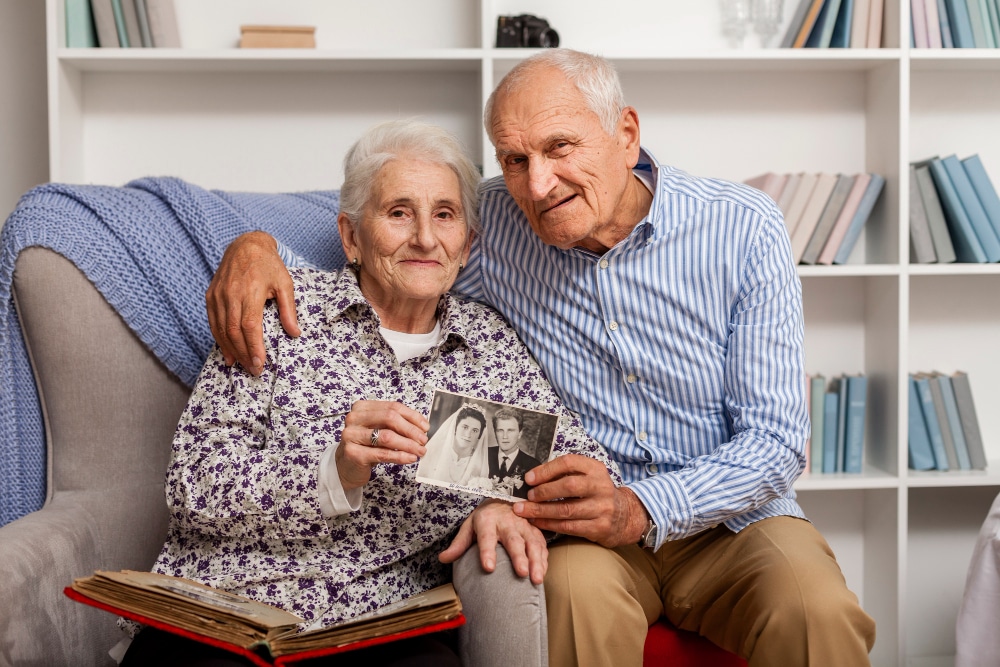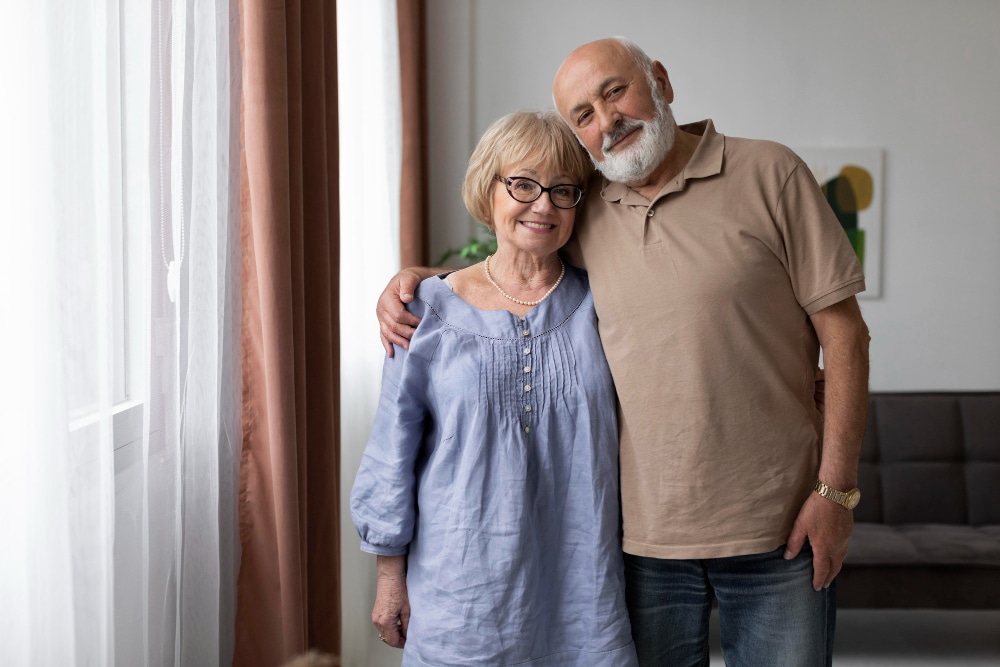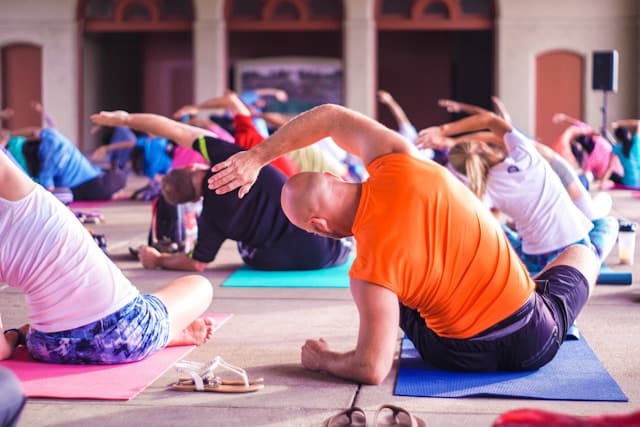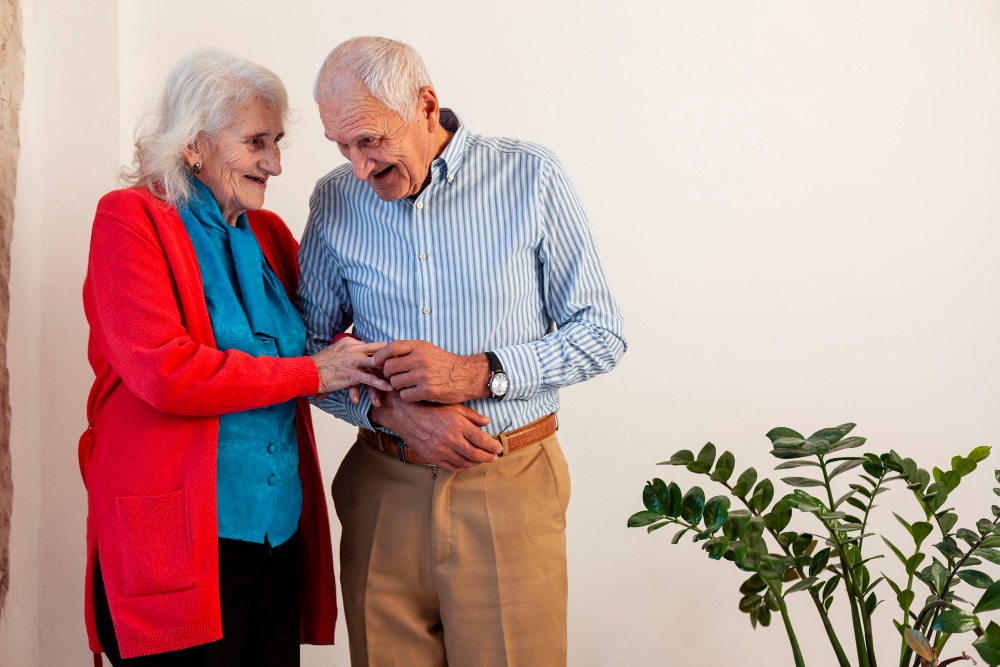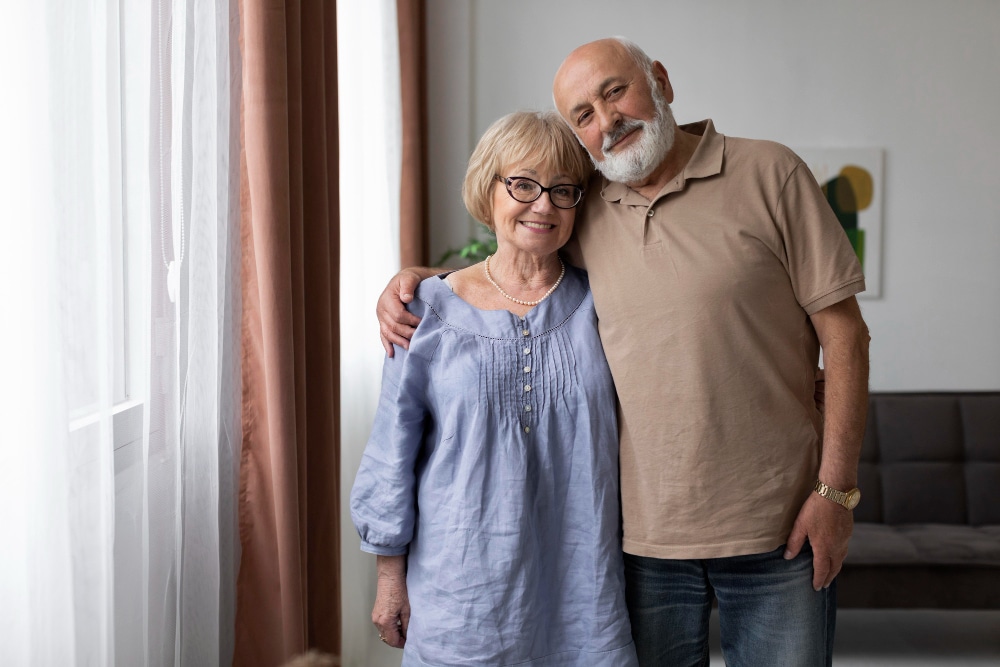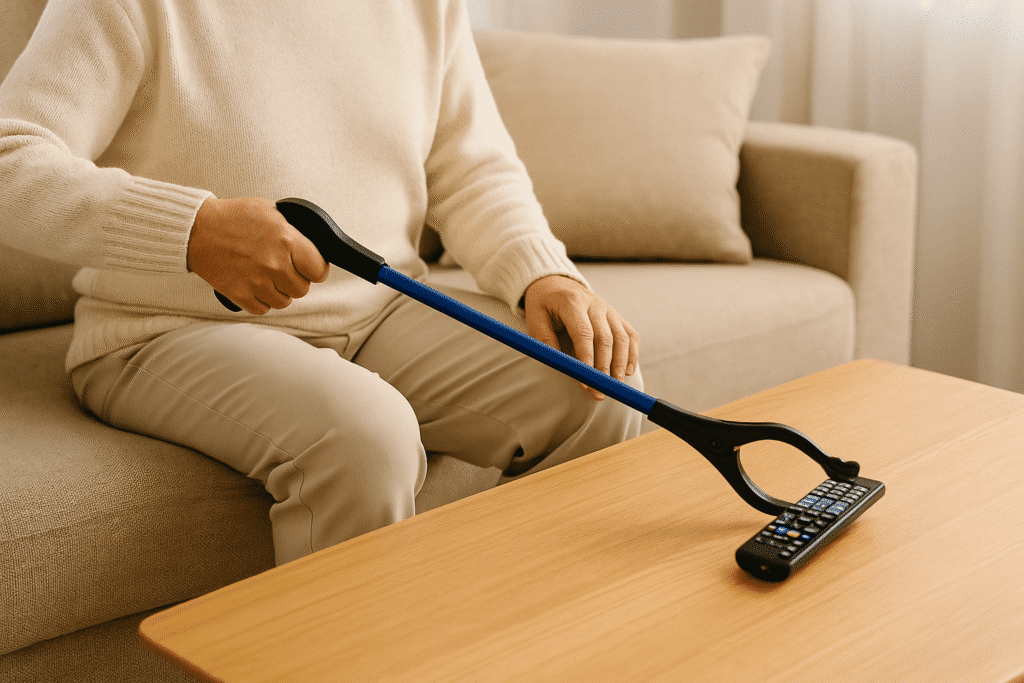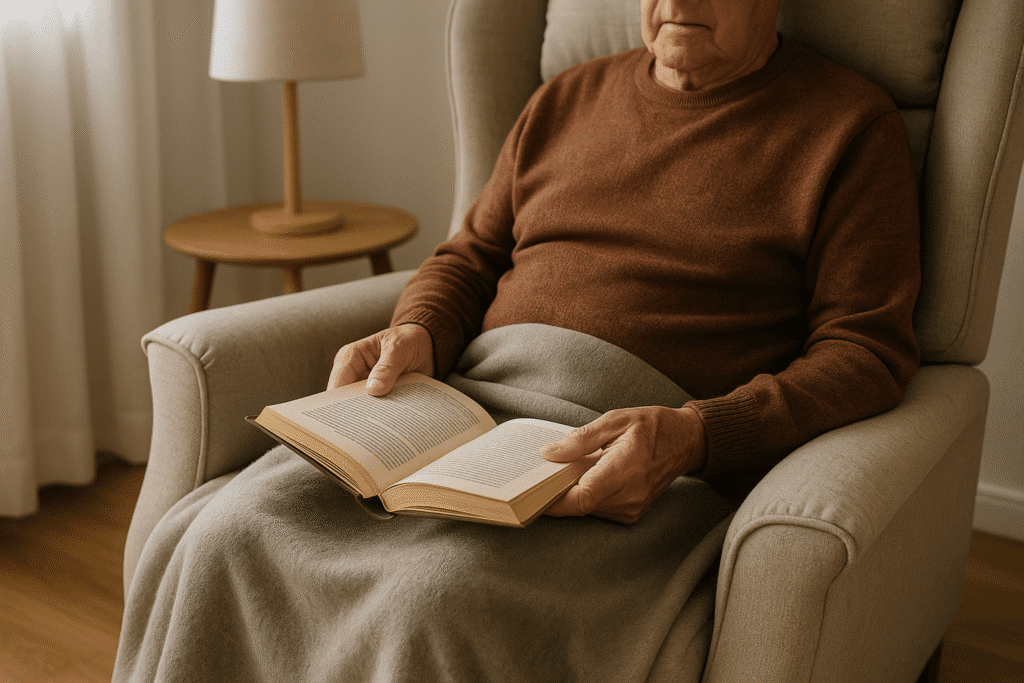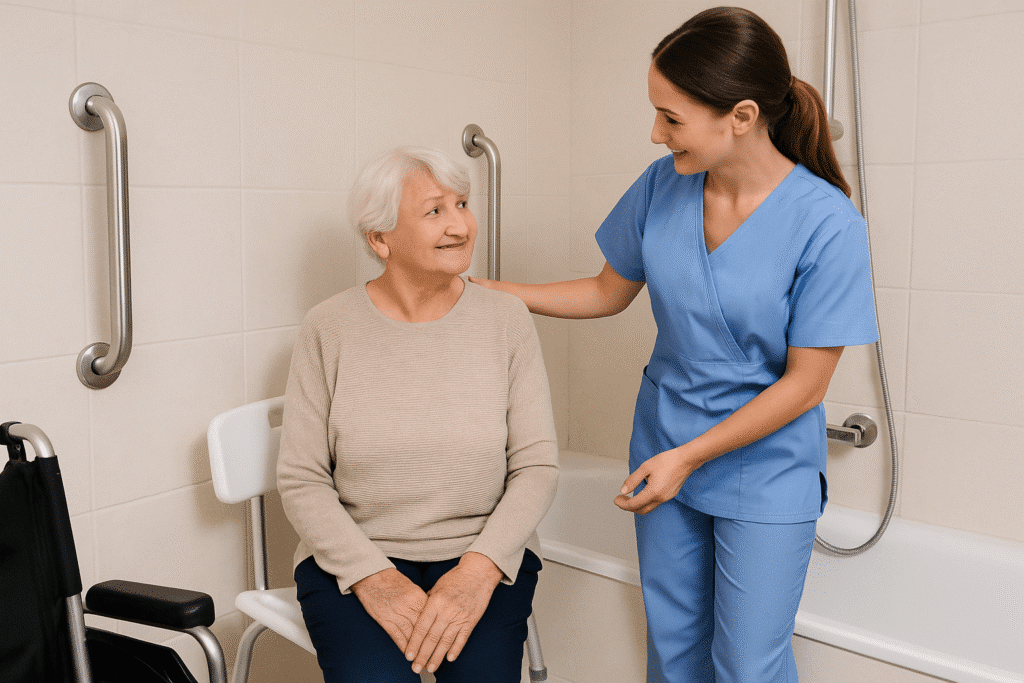As we age, our skin, energy levels, and mobility all change, and so do our hygiene needs. While many of us grew up thinking a daily shower is a must, that’s not always true for older adults.
In fact, most seniors only need to bathe once or twice a week to stay clean, comfortable, and healthy.
In this guide, I’ll share what aging experts recommend, why over-bathing can cause more harm than good, and how to keep seniors fresh and confident between showers.
Key Takeaways:
- Most seniors only need to shower 1–2 times a week to stay clean and protect their skin.
- Daily wipes, gentle cleansers, and safe bathroom setups help maintain hygiene between showers.
- Bathing more often may be needed for those with incontinence, heavy sweating, or outdoor activity.
- Safety and comfort should always come before strict routines; use grab bars, shower chairs, and warm lighting.
Why Older Adults May Not Need Daily Showers
Older adults often don’t need to shower every day because their skin produces less oil and sweat than it used to. Bathing too often can dry out the skin, make it itchy, and even cause small cracks that lead to infection.
Other factors that make daily showers unnecessary include:
- Reduced oil and sweat production: Aging skin doesn’t get as oily or sweaty as younger skin.
- Mobility and balance challenges: Getting in and out of a shower can be risky. Bathrooms are where nearly 80% of home falls happen, according to the CDC.
- Energy conservation: For some seniors, a long shower can be tiring or even dizzying.
When caring for older adults, I’ve found that a simple hygiene routine, like washing the face, hands, and private areas daily, works better than forcing daily showers. It keeps them clean while protecting skin and preserving independence.
Read more: How to help seniors with bathing at home
How Often Should an Elderly Person Shower?
Most elderly people should shower once or twice a week. That’s usually enough to remove bacteria, prevent odor, and keep skin healthy without over-drying it.
Of course, the right frequency depends on each person’s situation. Seniors who are more active or go outdoors often may benefit from bathing three times a week, while those with limited mobility may rely more on sponge baths.
For individuals managing incontinence, quick cleaning with warm water and mild soap after each episode is essential to prevent irritation or infection.
I always remind families: it’s not about how often someone showers, but how comfortably and safely they can maintain hygiene. A well-moisturized body, clean clothes, and gentle routines go much further than strict bathing schedules.
Risks of Over-Bathing in the Elderly
Showering too often can do more harm than good for aging skin and health.
Some common risks include:
- Dry, itchy skin: Frequent washing removes the skin’s natural oils, leading to flakiness and discomfort.
- Irritation or eczema flare-ups: Overuse of soap or hot water can make sensitive skin worse.
- Higher fall risk: Wet bathroom floors increase the chance of slips and injuries.
- Infection from small skin cracks: When skin becomes overly dry, even tiny cuts can allow bacteria to enter.
- Fatigue or dizziness: Prolonged showers can cause low blood pressure or tiredness, especially in those with heart conditions.
Keeping bathing routines short, gentle, and safe is far more beneficial than frequent scrubbing.
Hygiene Alternatives Between Showers
On the days when a full shower isn’t possible, there are plenty of gentle ways to stay fresh and clean. I’ve seen many older adults feel more comfortable when hygiene routines are flexible and less tiring. What matters most is cleanliness and comfort, not the number of showers per week.
Here are some easy in-between options:
- Body wipes or no-rinse cleansers: These are perfect for a quick clean after meals, outdoor time, or incontinence care.
- Dry shampoo: Helps keep hair clean and light without the need for a full wash.
- Focus on key areas: Gently clean underarms, groin, face, and feet daily to stay fresh.
- Change clothes often: Wearing clean clothes and undergarments each day helps prevent odor and skin irritation.
Adding a touch of moisturizer afterward keeps skin soft and reduces itching, especially in dry climates or during winter. Even a warm washcloth wipe-down can make a senior feel renewed and comfortable.
How Caregivers Can Help with Bathing
For many older adults, bathing can be a sensitive or even stressful experience. Caregivers play an important role in making it feel safe and respectful.
I always tell families to move at the person’s pace and communicate gently. Explaining each step before doing it helps reduce fear, especially for those with dementia or memory loss.
Keep the process simple and supportive, not rushed. Offer choices when possible, such as morning or evening baths, or which towel they prefer.
Small gestures like keeping towels warm, using soft lighting, and playing calming music can make bath time much more pleasant.
The goal is to protect dignity while ensuring cleanliness and comfort.
Making Bath Time Safer for Seniors
Bathroom safety is one of the biggest concerns for seniors. Slippery floors, poor lighting, and hard surfaces can make falls more likely, and falls are the leading cause of injury among older adults. A few smart upgrades can make all the difference.
Helpful safety additions include:
- Grab bars: Install near the toilet and shower for extra stability.
- Non-slip mats: Place inside and outside the shower to prevent slipping.
- Shower chairs or benches: Allow seniors to sit and rest while bathing.
- Handheld showerheads: Make rinsing easier without too much movement.
Also, keep the bathroom warm and bright. Avoid locking doors in case assistance is needed quickly. These small changes not only improve safety but also help seniors feel more confident and independent when bathing.
When to Bathe More Often
Some situations call for more frequent bathing or cleaning, even if daily showers aren’t needed.
- Incontinence or accidents: Always clean the affected area immediately to prevent irritation or infection.
- Hot or humid weather: Extra sweating may require more frequent rinsing or wipe-downs.
- Outdoor activity or exercise: Bathing after activity helps prevent odor and bacterial buildup.
- Skin infections or medical advice: Follow your doctor’s recommendations for skin care or wound hygiene.
Final Words
Caring for aging skin and hygiene is about balance, keeping clean without causing dryness or risk. Most older adults do best with one or two showers a week, paired with gentle daily care using wipes or washcloths.
Focus on comfort, safety, and dignity. Use mild cleansers, moisturize often, and make the bathroom a safe, welcoming space.
With the right setup and a little patience, staying clean and confident becomes easier for everyone, seniors and caregivers alike.
FAQs
How often should elderly people wash their hair?
Most older adults only need to wash their hair about once a week, as the scalp produces less oil with age. If the hair starts to feel greasy or has odor sooner, using a gentle or dry shampoo between washes can help keep it fresh.
What’s the best soap for elderly skin?
The best soaps for seniors are mild, fragrance-free, and moisturizing. Look for cleansers labeled for “sensitive” or “dry” skin.
How do you clean a bedridden person?
A sponge bath with warm water, soft towels, and gentle soap is the safest way to clean a bedridden person. Wash one area at a time, keep the body covered for warmth, and always dry thoroughly to prevent skin irritation or sores.
What should caregivers do if a senior refuses to shower?
Stay calm, patient, and respectful. Try to understand the reason: fear, confusion, or discomfort, and offer alternatives, like a sponge bath or wipes, until they feel ready to bathe again.
Lauren brings 8+ years of writing experience focused on accessibility, home organization, and senior living. Her practical guides are shaped by conversations with seniors and caregivers, helping readers simplify daily tasks with clarity and confidence.

